A multimedia journalist took Canon EOS R5 Mark II for a spin, here’s what he thinks about the smart camera | Technology News

Being a multimedia journalist who juggles between cameras, I was thrilled when I got to know about the latest Canon EOS R5 Mark II. Over the years, I have become a Canon loyalist, and there is more than one reason to justify it. Twelve years ago, I started my journey with Canon’s entry-level crop-sensor EOS 600D, upgraded to the full-frame 6D Mark II after six years, and for two years I have been using the R5C, Canon’s cinema range mirrorless. For the past few weeks, I have been working with the EOS R5 Mark II for my assignments. I have been beyond impressed.
With deep machine learning, eye-control focus, in-camera upscaling, people priority, and pre-continuous shooting, Canon’s professional mirrorless camera, the EOS R5 Mark II, is one of the most smart-feature-loaded cameras. An upgrade after four years to R5, the mirrorless equivalent of one of the most successful DSLRs, the EOS 5D series, the R5II carries the weight of being the best in the range.
Is this the first smart camera? Can this be a game-changer for professionals? I took the camera for a spin to find out how useful the features are out of paper. I used the R5II with 24-70mm f2.8, 50mm f1.8, and 70-200mm f2.8 in the streets of Delhi and shot some interviews with R5 C as the primary and R5II as the secondary camera. Aimed at professionals who demand speed, accuracy, and the highest quality imaging and videos, the R5II takes several features of the previous Canon’s top-end mirrorless R3.
The Canon EOS R5 Mark II is a powerhouse of innovation and precision, bringing boundless creative possibilities. (Photo: Chitral Khambhati/The Indian Express)
I got used to a sizable upgrade in the camera bodies when I first upgraded my DSLR to another, but with mirrorless cameras there are no major changes. Not that I miss the extra weight or a bigger body; it’s the newness associated with the weight and feel of an upgrade that is gone. Emotions aside, the ergonomics of the R5II are well sorted. Every button is within the reach of a single hand, and anyone with a familiarity of the Canon user interface can pick the camera, set it up, and start shooting.
Straight out of the box, the R5II has two minor changes from the predecessor R5: a tally lamp (which was available in R5 C) and no visible viewfinder sensor. The Mark II fuels features from the previous top of the camera range—R3. Made with a light magnesium alloy, the R5II is a rough and tough weather-sealed camera. Having used the R5C, I have no complaints about the weather sealing, as it has stood well under several conditions, from Delhi’s scorching heat to rains and low temperatures in the mountains.
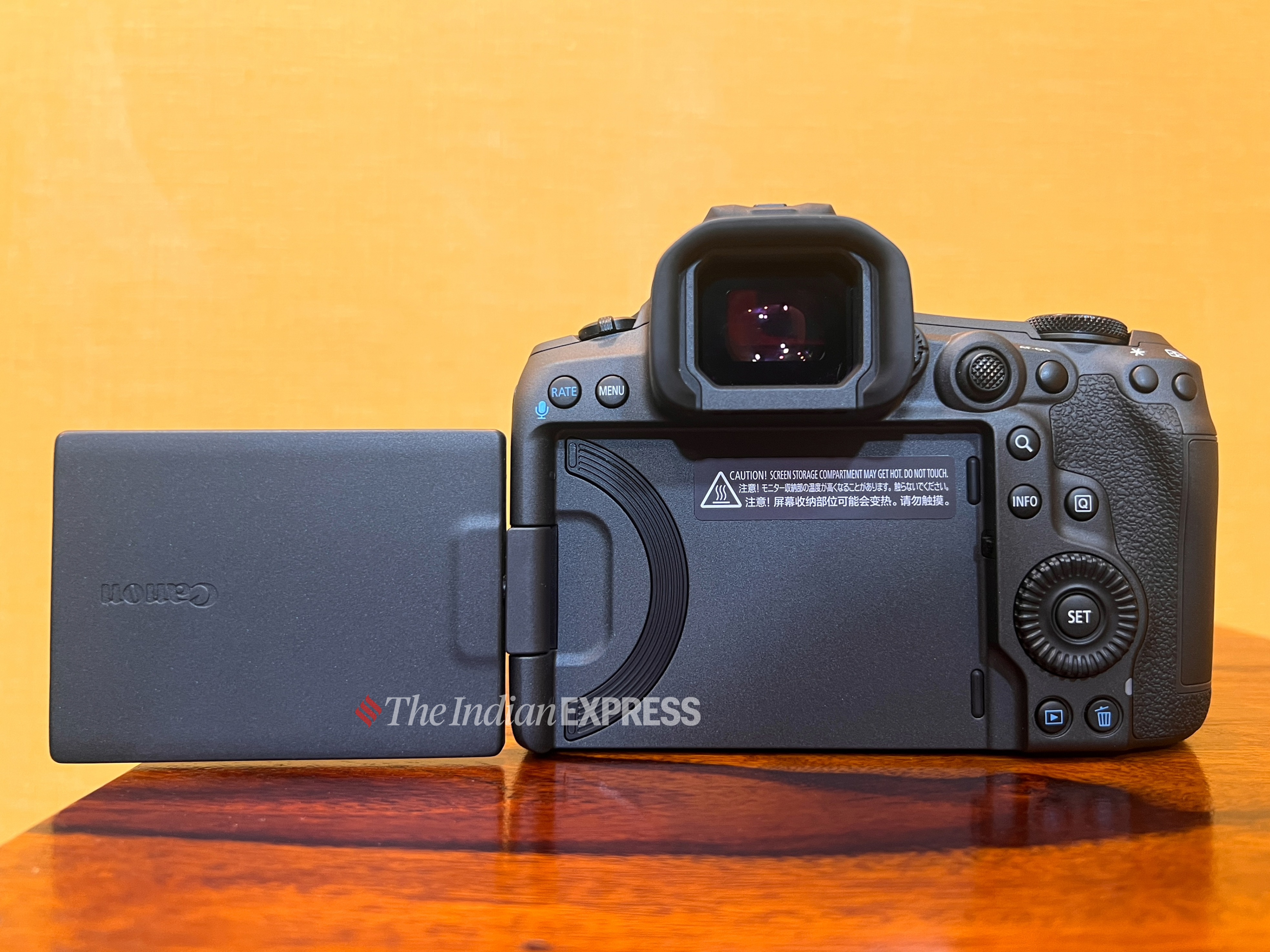 A closer look at the Canon EOS R5 Mark II’s back interface showcasing its intuitive controls and fully articulating screen. (Photo: Chitral Khambhati/The Indian Express)
A closer look at the Canon EOS R5 Mark II’s back interface showcasing its intuitive controls and fully articulating screen. (Photo: Chitral Khambhati/The Indian Express)
Weighing around 750 g (without a lens), it has a 3.2-inch flip touchscreen LCD display, an illuminated top display, and is equipped with three dials and one joystick. It has a dual-card slot for CFexpress and SD cards. R5II has a battery upgrade to LP-E6P from R5’s LP-E6NH, which has worked well for a full-day photo-heavy use.
The video is where things get complex. This camera shoots 8K at 60 fps, 4K at 120 fps, and can go to 240 fps at 2K and Full HD resolutions. While the previous model had log 1 and log 3, the R5II can shoot Canon Log 2 and Log 3, which can preserve details and give a better colour range to work on. With tally lamp, waveform, zebra display, false colour, and focus guide, the camera gets an upgrade from the previous model. These features were kept for the video-heavy R5C, but with the R5II, Canon has gone out to make this a powerhouse for both video and photo users. I shot the Republic Day parade rehearsal in the capital in slow motion, and I was beyond impressed by the results.
The R5II cannot shoot videos beyond 4K when an older version of the battery is used. With the battery of the R5, it can only shoot FHD, 2K, and 4K in 25 fps. The R5C of the cinema line, a parallel predecessor of the R5II, works even on my DSLR, the 6D Mark II’s LP-E6N battery. Though I have minor complaints in regard to battery, a little more would be too much to ask for.
Story continues below this ad
 Screengrab of a video shot with Canon EOS R5 Mark II. (Image: Chitral Khambhati/The Indian Express)
Screengrab of a video shot with Canon EOS R5 Mark II. (Image: Chitral Khambhati/The Indian Express)
For me, the cinema series most definitely has the upper hand when it comes to visible image quality for video. But for professionals looking for photo-heavy work, and with enough budget, there is nothing to go wrong with Canon’s R5II.
Accelerated processor
One of the first things I noticed after shooting with the R5II was the speed, be it the shooting speed, the focusing speed, or the readout. The R5II is packed with a back-illuminated 45-megapixel stacked CMOS sensor equipped with the Digic X processor with a new addition of Digic Accelerator. The Digic Accelerator helps with faster autofocus and faster readout speed. But this also makes the camera heat up.
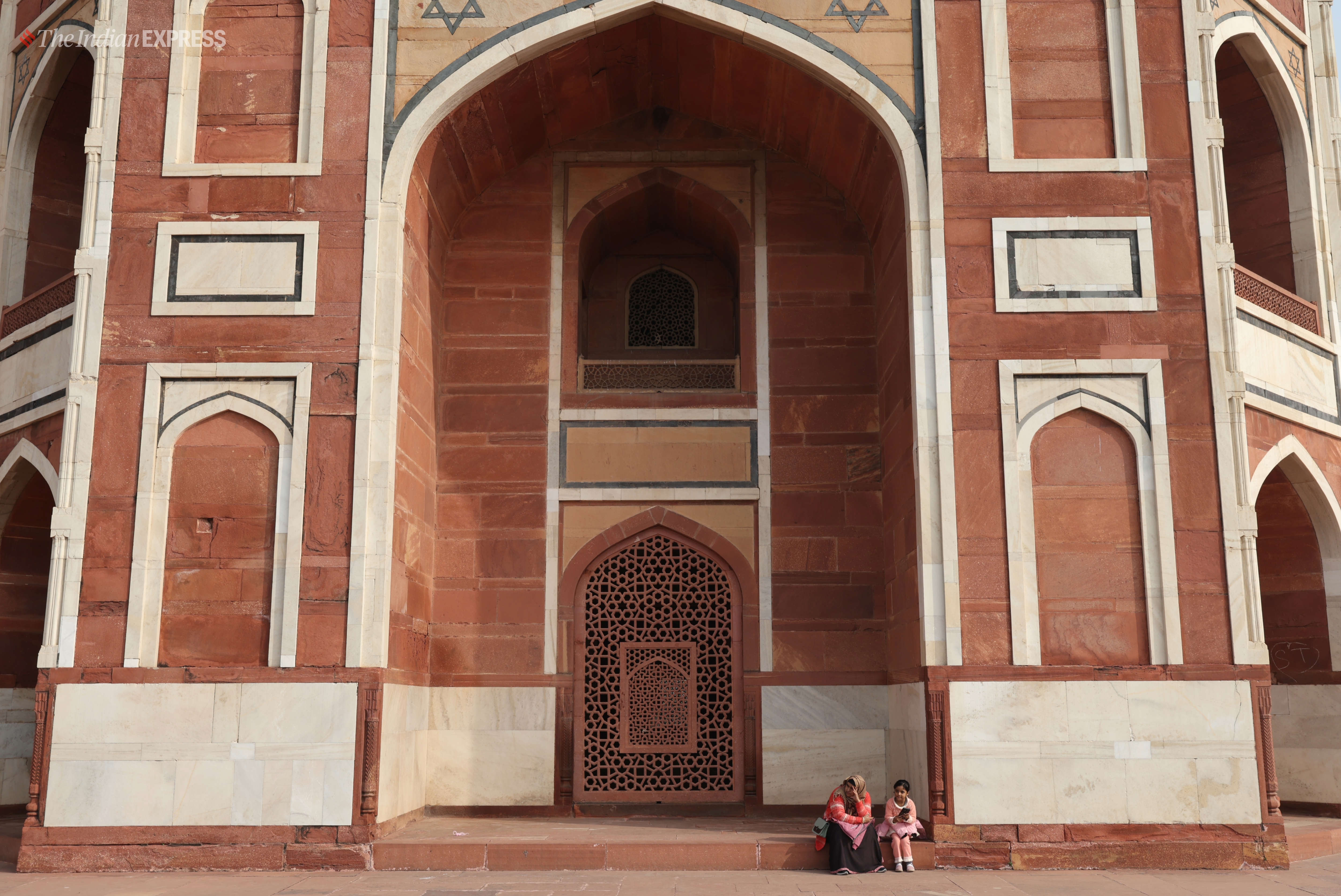 (Photo: Chitral Khambhati/The Indian Express)
(Photo: Chitral Khambhati/The Indian Express)
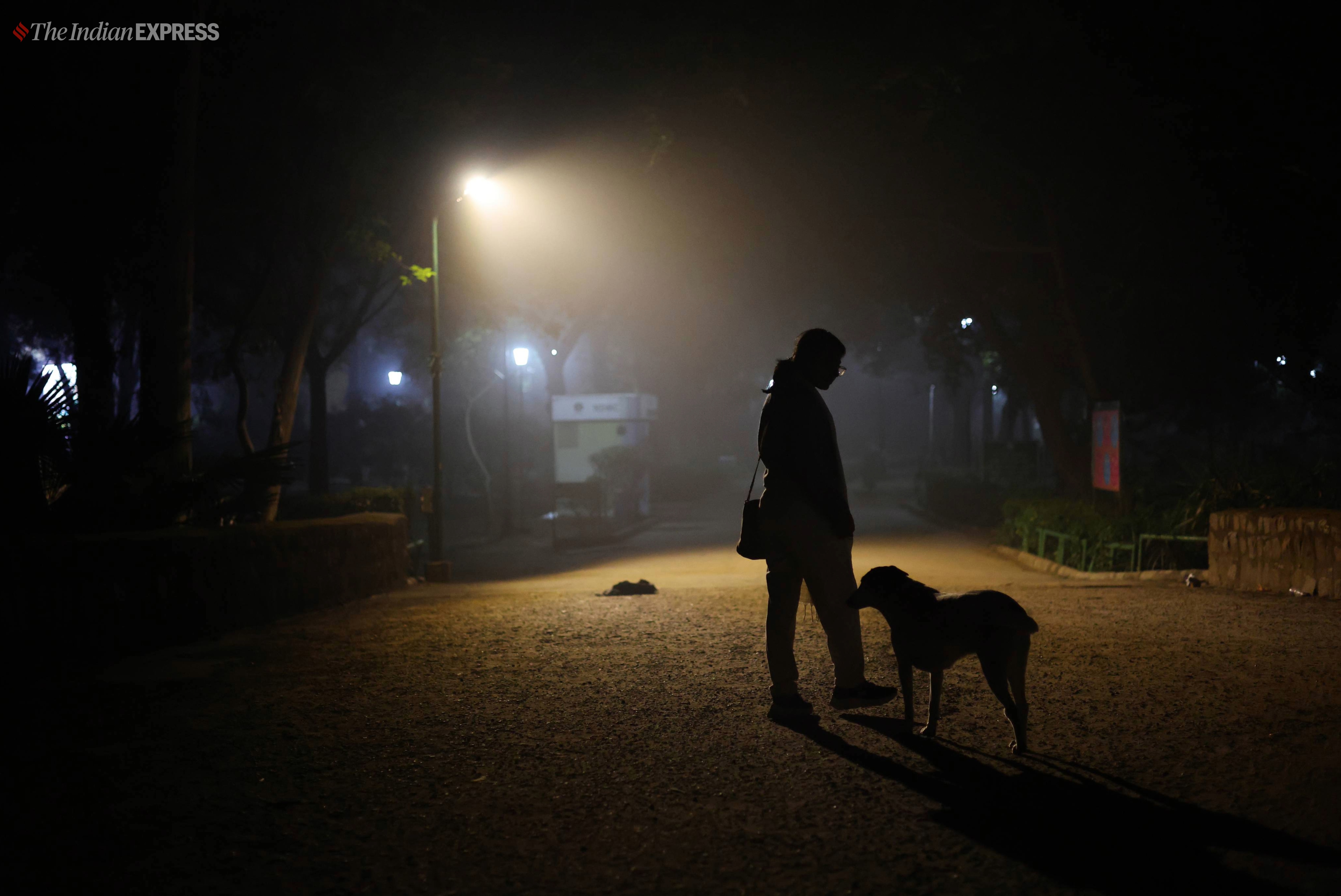 (Photo: Chitral Khambhati/The Indian Express)
(Photo: Chitral Khambhati/The Indian Express)
 (Photo: Chitral Khambhati/The Indian Express)
(Photo: Chitral Khambhati/The Indian Express)
While shooting this interview in 2K, the camera went up to 4 bars of heating signal display, but the body itself was not as hot. My R5C has a cooling fan built inside the camera, but for the R5II, Canon suggests using their new battery grip CF-R20EP, where CF stands for cooling fan.
The camera also allows dual shooting; that is, you can shoot pictures while recording videos. The catch here is that you are limited to shooting videos in FHD resolution at 25 frames per second.
Story continues below this ad
 (Photo: Chitral Khambhati/The Indian Express)
(Photo: Chitral Khambhati/The Indian Express)
The camera’s electronic shutter shoots 30 frames in high-speed continuous mode, with a 0.5-second pre-continuous shooting at half-pressed shutter, which can go up to 15 frames. That’s 15 photographs before the shutter is pressed. Making it perfect for photojournalists, sports and wildlife photographers, and anyone shooting unpredictable action. You can also pre-record video up to 5 seconds. The camera offers a high-precision, blackout-free electronic viewfinder (EVF) that works well while shooting pictures in any burst mode seamlessly. But I did notice lag in the EVF while shooting videos.
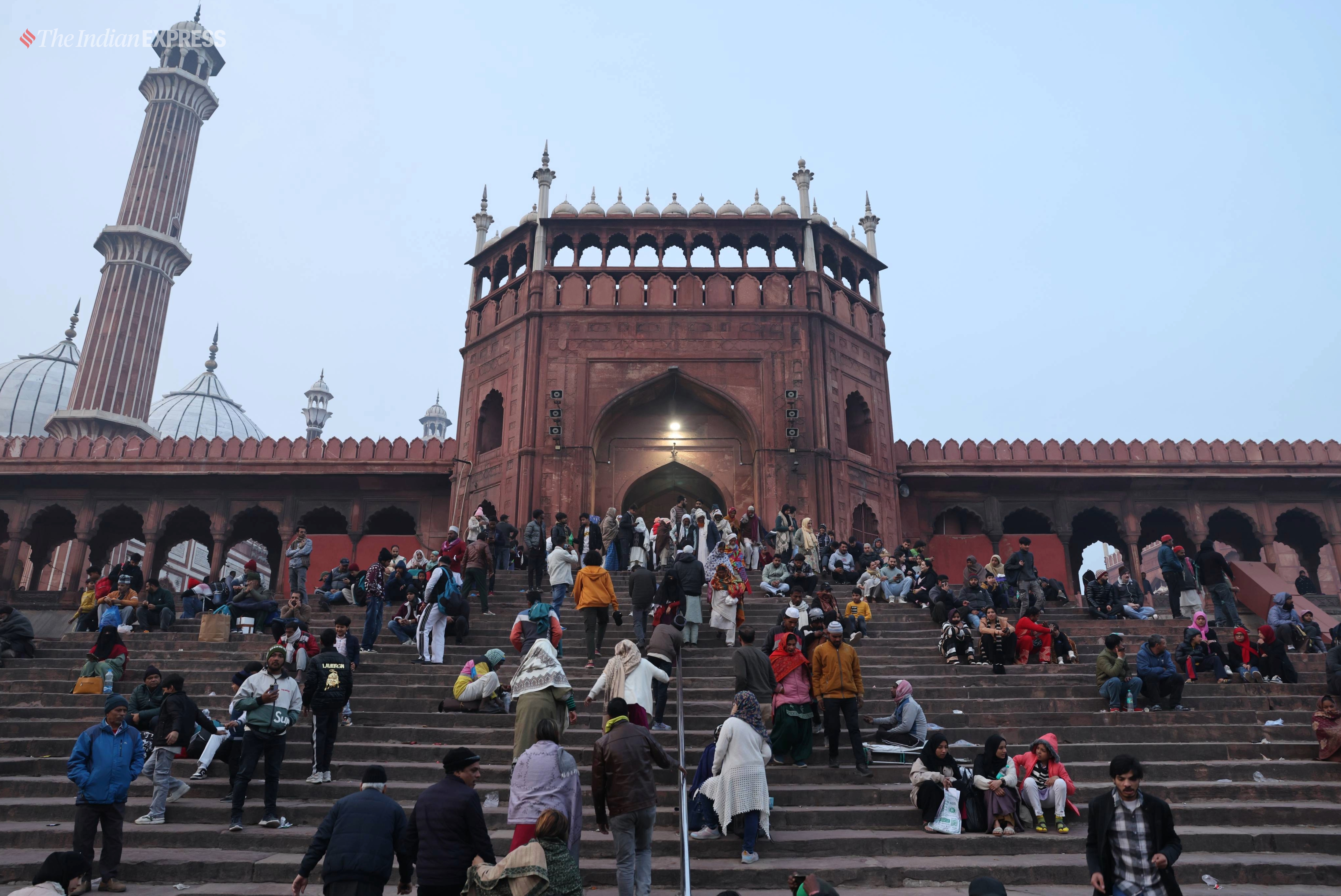 (Photo: Chitral Khambhati/The Indian Express)
(Photo: Chitral Khambhati/The Indian Express)
Noise performance
Digic X has been Canon’s standard processor for the professional line since the 1D X Mark III. With the Digic Accelerator, the R5II is built with neural network noise reduction, which is said to have improved the low-light performance with cleaner images. This only works on RAW pictures and does a fair job. But it would be better if the same were allowed for JPEG images. With the ISO range of 100-51200 (extendable up to 50-102400), you can see the image below for an ISO comparison of JPEG images. Photographs more than ISO 10,000 get grainy, and after ISO 25,600, start losing colours.
 (Photo: Chitral Khambhati/The Indian Express)
(Photo: Chitral Khambhati/The Indian Express)
 (Photo: Chitral Khambhati/The Indian Express)
(Photo: Chitral Khambhati/The Indian Express)
Deep learning technology
Claimed as Canon’s ‘proprietary’ deep learning image processing technology, which uses complex neural networks and analysis algorithms, the R5II has an algorithm-based auto-focus system and subject tracking padded with an obstacle avoidance algorithm. This is also speculated to help achieve accurate exposure and white balance. As complicated as it sounds, Canon has worked on making this a smart camera that will fit the requirements of specific photographers.
The autofocus is where the R5II has won the game for me. This is where there is a major upgrade in a true sense.
Story continues below this ad
Facial recognition-powered focusing
If you are out shooting sports, daily news, political events, or a fashion show, there will be some personalities or celebrities who will be of the utmost importance. With this camera, you can register faces from pictures in the card, and it will save a file for the same. Now the registered faces are prioritised while focusing. The camera will catch onto these faces with a yellow box, and you can switch to different faces while shooting. R5II can register ten faces at once.
Action Priority AF
An upgrade to the autofocus system on the R5, R5II is packed with an Action Priority AF, available in the R3. This mode is developed to track actions in three fast-performance sports: football, basketball, and volleyball. The deep learning here helps track the ball and capture action by recognising joints of the athletes in certain positions so that you never miss the peak moment. This mode can be used along with People Priority AF but supersedes the same if action is recognised elsewhere.
Focus where you look with Eye-Control AF
This auto-focussing method, launched with the R3, is the one that caught my eye (quite literally). Friends I spoke to about this feature confused it with eye-track focus. The Eye-Control AF does not focus on the subject’s eyes; the camera can do that easily, and it is surprisingly fast and accurate. You even get the option to select the right or left eye of the subject. But the Eye-Control AF is about the shooter’s eye, tracking its movement, and with enough hand-eye coordination, what you see is what you photograph. Having tested this on the bustling streets of Old Delhi, R5II rarely lost focus and proved to have an intelligent depth perception and subject recognition.
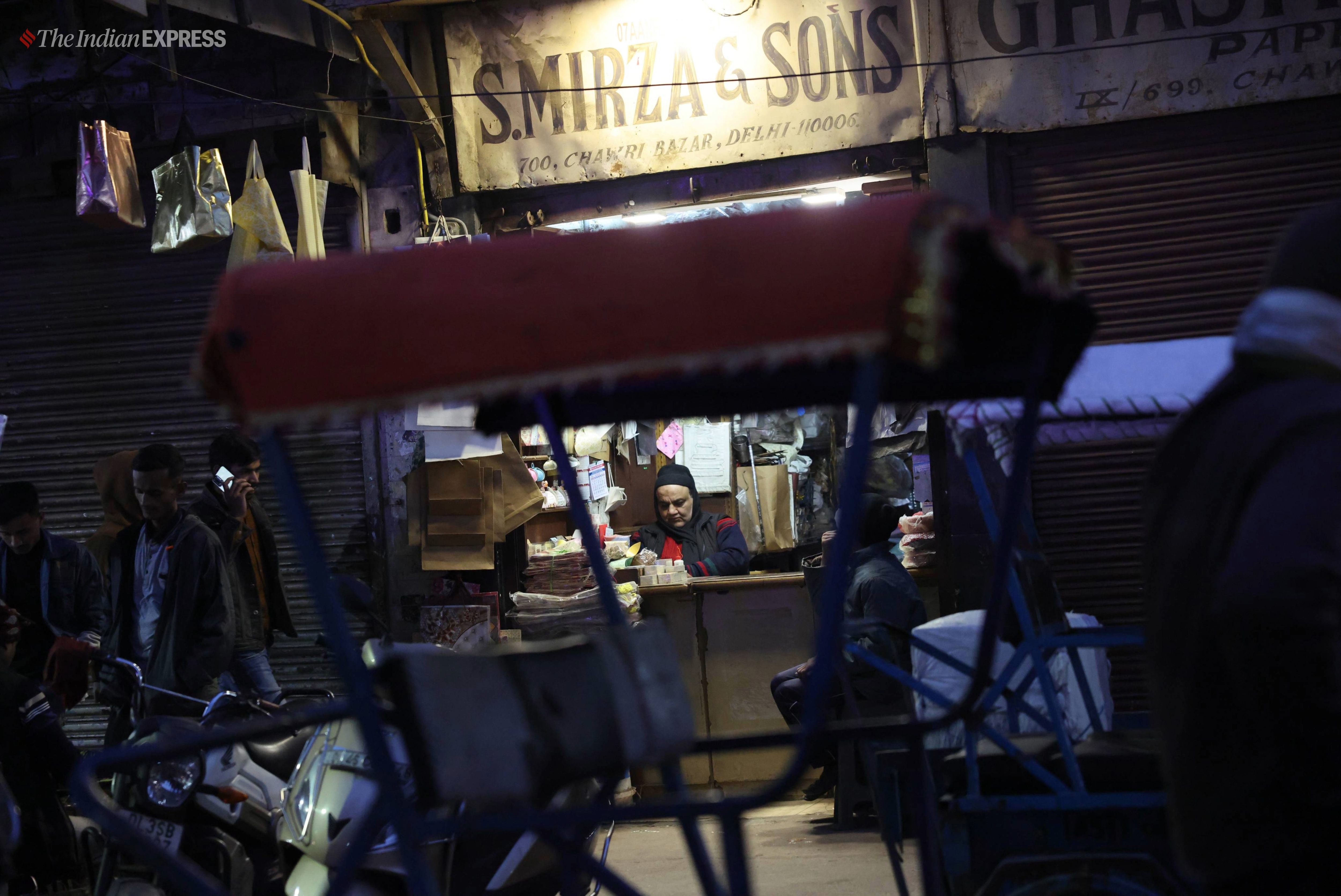 (Photo: Chitral Khambhati/The Indian Express)
(Photo: Chitral Khambhati/The Indian Express)
The eye control has to be calibrated for different users, users with lens or spectacles and the camera has six calibration profiles to set up. The calibration process is pretty straightforward, where you look at the dots displayed on four sides inside the viewfinder, click the M-Fn button, refine it while holding the camera vertically as well, and do the same in different brightness settings. While it worked smoothly after I set it up, reaching the edges of the frame to focus, it did loosen out when I used it in different light settings and had to be recalibrated.
Story continues below this ad
 (Photo: Chitral Khambhati/The Indian Express)
(Photo: Chitral Khambhati/The Indian Express)
In-camera upscaling
AI-powered upscaling is another new feature added in the R5II, which allows doubling the pixels vertically and horizontally. The upscaled image is four times higher in pixel and size than the original, but visibly, the results are not as stark as claimed. While there is some improvement in the quality of the image, this does not stand out to be the most useful feature.
 (Photo: Chitral Khambhati/The Indian Express)
(Photo: Chitral Khambhati/The Indian Express)
Now, all these top-of-the-line technology features can be mixed and matched to achieve the best and fastest results. Most of the focusing features complement each other to make life easier and give an edge to the photographer using it. The chances of going wrong in terms of focus are quite bleak. Some may feel that it is the camera doing most of the heavy lifting here, but as Ansel Adams said, “The single most important component of a camera is the twelve inches behind it.”




